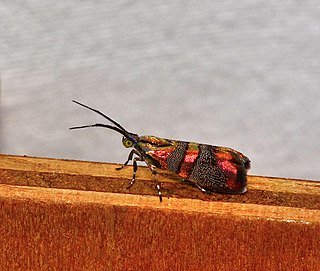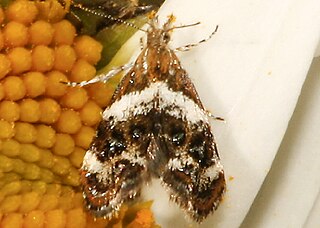Zodia chrysosperma is a moth of the family Choreutidae. It is known from Brazil.
Zodia ochripalpis is a moth of the family Choreutidae. It is known from Brazil.
Zodia plutusana is a moth of the family Choreutidae. It is known from Brazil.
Tortyra violacea is a moth of the family Choreutidae. It is known from Brazil.

Tortyra slossonia, commonly known as the reflective tortyra moth, ficus budworm or Slosson's metalmark moth, is a moth of the family Choreutidae. It is known from Florida.
Tortyra rhodoclaena is a moth of the family Choreutidae. It is known from French Guiana.
Tortyra orphnophanes is a moth of the family Choreutidae. It is known from Peru.
Tortyra iocyaneus is a moth of the family Choreutidae. It is known from Florida, United States.
Tortyra ignita is a moth of the family Choreutidae. It is known from Cuba.
Tortyra fulgens is a moth of the family Choreutidae. It was described by Cajetan Felder, Rudolf Felder and Alois Friedrich Rogenhofer in 1875 and is known from Colombia, Brazil and Bolivia.
Tortyra ferratella is a moth of the family Choreutidae. It is known from Panama and Costa Rica.
Tortyra aurofasciana is a moth of the family Choreutidae. It is known from the West Indies.
Tortyra argentifascia is a species of moth of the family Choreutidae found in Mexico.
Tebenna agelasta is a moth of the family Choreutidae. It is known from Uganda.
Tebenna balsamorrhizella is a moth of the family Choreutidae. It is known from northern North America, including Montana, Utah, British Columbia and Alberta.

Tebenna onustana is a moth of the family Choreutidae. It is known from Ontario, Quebec and the north-eastern part of the United States.

Tebenna gemmalis is a moth of the family Choreutidae. It is found in North America from California to British Columbia.

Tebenna gnaphaliella, the everlasting tebenna moth, is a moth of the family Choreutidae. It is found from Florida to California and north at least to New Hampshire.

Tebenna piperella is a moth of the family Choreutidae. It is known from Canada, including British Columbia and Alberta.
Melanoxena is a genus of moths in the family Choreutidae, containing only one species, Melanoxena falsissima, which is known from Colombia.




